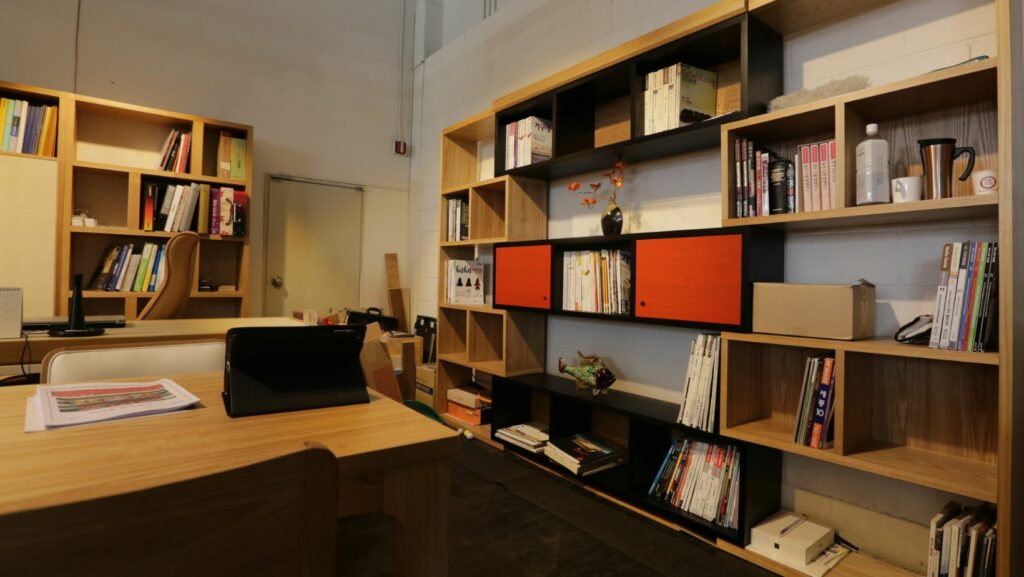Minimalism once reigned supreme with its clean lines and uncluttered spaces, only to be challenged by a new movement. One that’s appeared to oppose traditional notions of beauty and order. Enter Cluttercore: a design philosophy that goes beyond maximalism, embracing chaos, sentimentality and the profound beauty found within the seemingly chaotic.
The Roots of Cluttercore
To understand this interior design, you need to first acknowledge its predecessors. Minimalism, with its “less is more” mantra, gave birth to maximalism, a rebellion that championed “more is more”. Maximalism celebrates abundance, bold colours and intricate patterns. Filling spaces with a curated collection of items that reflected the owner’s personality and taste. But Cluttercore isn’t maximalism turned up a notch; it’s an entirely different beast.
Cluttercore transcends maximalism by discarding the curated nature of maximalist spaces. Instead, it embraces the messiness of life, the imperfections, and the accumulation of objects that tell the story of who we are. It’s a celebration of chaos, one where every item, regardless of its aesthetic value, holds significance.
The Philosophy of Cluttercore
At its core, Cluttercore is about authenticity and sentimentality. It rejects the notion that a home should look like a showroom; instead, embracing the lived-in, the eclectic, and the deeply personal. Where minimalism and even maximalism might shy away from perceived clutter, this trend sees it as a canvas of memories and experiences.
In a Cluttercore space, you might find a stack of old books next to a vintage lamp, a collection of mismatched teacups on an overstuffed shelf, or a wall plastered with photographs, postcards, and random mementos. The design isn’t dictated by a desire for aesthetic perfection but by the story, each item tells.
The Emotional Connection
Cluttercore is deeply rooted in emotional connection. Every object in a Cluttercore space has a story and a memory attached to it. The old, worn-out armchair isn’t just a piece of furniture but a repository of countless evenings spent reading, reminiscing, or simply relaxing. The chipped vase on the mantelpiece might have been a thrift store find that sparked joy or a family heirloom passed down through generations. The solid wood flooring may have seen your baby’s first steps or your partner’s proposal.

This design philosophy encourages us to surround ourselves with things that make us happy; regardless of whether they match or fit into a preconceived design scheme. It’s a rebellion against the impersonal and the uniform. A movement that champions individuality and personal history.
The Aesthetic of Cluttercore
While Cluttercore might sound like a free-for-all, there’s a distinct aesthetic to this movement. It’s an aesthetic that finds beauty in imperfection and charm in chaos. Think of it as a lived-in charm, where the worn edges of a book or the scuffs on a wooden table add character and depth.
Textures play a significant role in Cluttercore spaces. Soft, plush fabrics mix with rough, rustic surfaces; creating a tactile environment that invites touch and interaction. Think of the contrast between the imperfect, warm grain of engineered wood flooring and the coarse feel of a jute rug. Colours are varied and abundant. Often leaning towards warm, comforting hues that evoke a sense of homeliness.
Cluttercore in Practice
Implementing this trend into your home involves letting go of the desire for perfect order. Embracing a more organic approach to decorating.
Embrace Sentimentality: Fill your space with items that hold personal significance. Don’t worry about matching or fitting a particular style. If it brings you joy, it belongs.
Display collections: Whether it’s a collection of vintage cameras, postcards, or quirky mugs, let your collections take center stage. Display them proudly and allow them to tell their story.
Mix and Match: Don’t be afraid to mix distinctive styles, eras and textures. A modern lamp can sit comfortably next to an antique table and a mid-century chair can find harmony with a bohemian rug.

Create Layers: layering is key in Cluttercore. Layer textiles, books, and decorative items to create depth and richness in your space. Think of your home as a three-dimensional collage.
Accept Imperfection: Let go of the need for everything to be pristine. Embrace the worn, the chipped, and the imperfect. These imperfections add character and tell a story.
The Psychological Impact of Cluttercore
There’s a psychological aspect to Cluttercore that resonates with many in today’s fast-paced, often impersonal world. In a society that constantly pushes for productivity and efficiency, Cluttercore offers a sanctuary of comfort and nostalgia. It allows individuals to slow down, appreciate the trivial things, and find joy in the everyday chaos.
By surrounding ourselves with meaningful objects, we create a space that’s wholeheartedly ours. It’s a form of self-expression that goes beyond aesthetics, tapping into our need for connection, memory, and identity.

